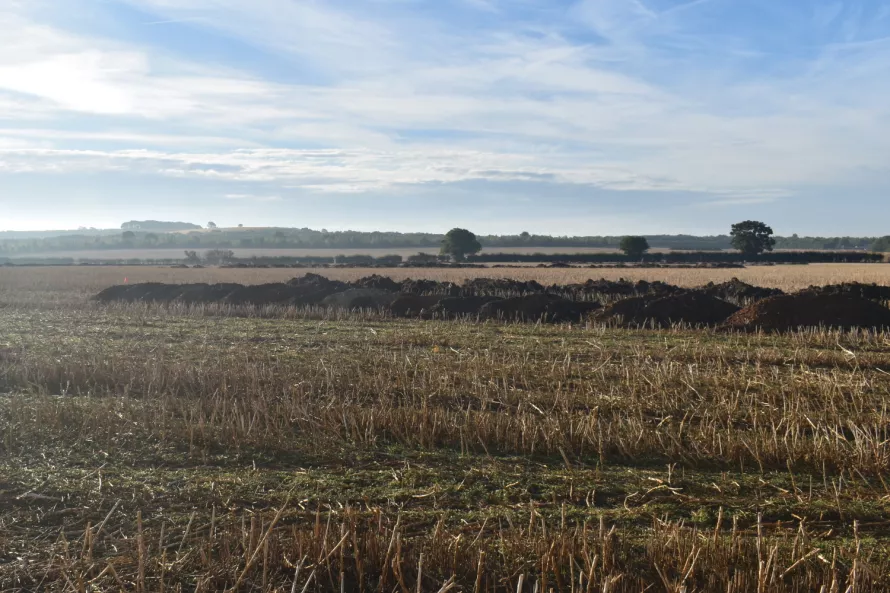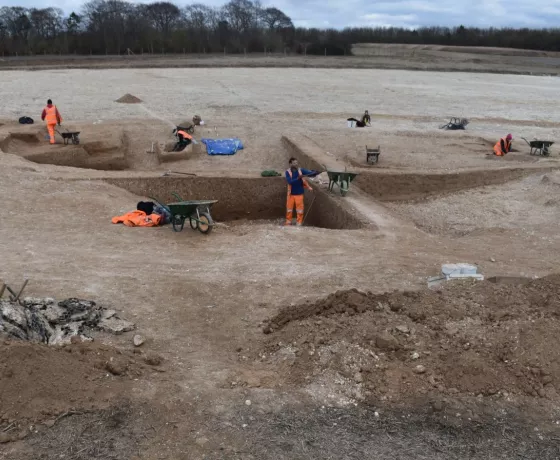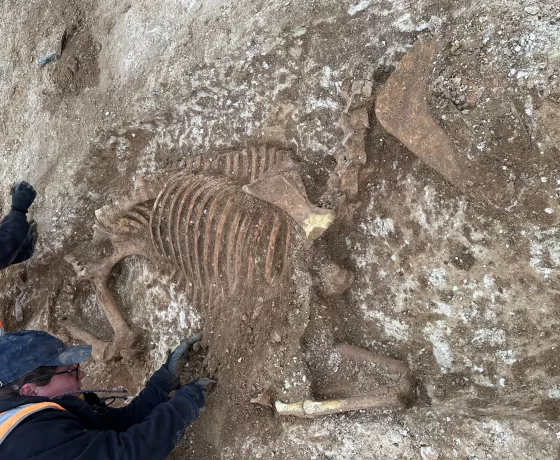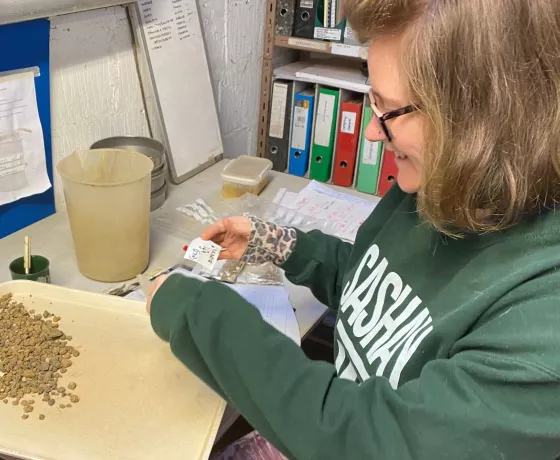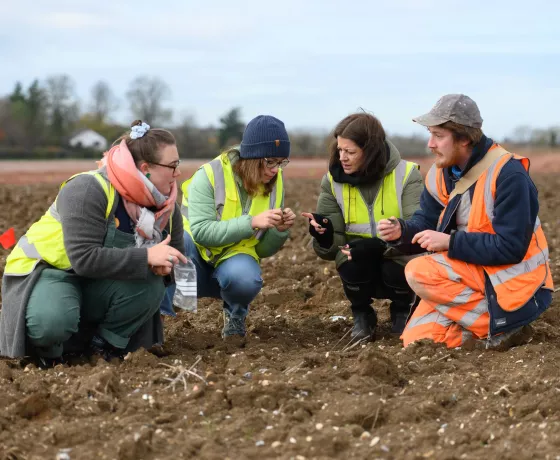Over the past 5 weeks, 110 trial trenches have been dug across the northern three fields of the site. The trial trenches are to check if these fields contain any archaeological features. Where found, we're interested in when the archaeology dates from and if it relates to what's already known about the area.
The trial trenches were 50m long, 2m wide and between 0.4m and 0.6m deep. We're often asked how we know where to dig. Most of the trial trenches are located over magnetic anomalies identified by a geophysical survey, but we also check blank areas to ensure we haven't missed any archaeology that wasn't picked up by the survey.
Looking south along the length of a narrow trial trench, with red and white survey poles for scale.
In the eastern field, we found a trackway, which had been identified during earlier archaeological work in the area. The trackway is formed by two parallel ditches going broadly north to south, and extends for 1km further south of the site alongside the route of the modern A11. Previous evidence suggests that this trackway is Late Prehistoric to Roman in date but we haven't managed to recover much dateable material during the current trial trenching.
A second trackway was also recorded in this eastern field, going northwest to southeast. It's possible that both sets of routeways are similar in age, but the relationship between them has yet to be determined.
A single posthole found in one of the trial trenches, along with a series of pits. This was a hole dug in the ground to hold an upright timber post and packed with stones to hold it in place.
In contrast to the eastern side of the site, the results of the geophysical survey in the western half were more tenuous, and we've found fewer archaeological features within the trenches. Several features (mostly pits) also contained prehistoric flint, which showed signs of deliberate working by human hands. We've also recovered some prehistoric flint from the overlying plough soil, and a small amount of potentially medieval poetry.
The next step is to open a couple of larger excavation areas in these northern fields where we have located archaeology. This should allow us to see and record the full extent of the features and hopefully we can recover further clues about when they date from and how they were used by people in the past.
Other posts in this collection
Read our latest posts about the archaeological investigations at Hinxton.

